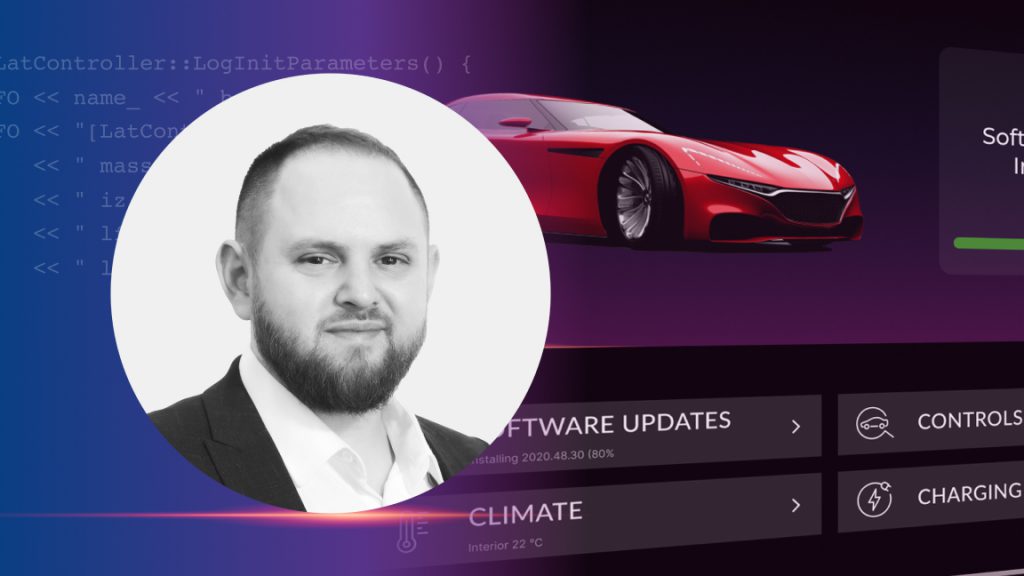PROACTIVE ANOMALY DETECTION CRUCIAL FOR SOFTWARE SECURITY IN AUTOMOTIVE INDUSTRY
- More than one-fifth of industry experts expect software sales to account for at least ten percent of carmakers’ sales as early as 2027
- More than half (53%) of respondents expect setback for electric offensive due to semiconductor shortage
- 45% of respondents expect each connected vehicle to receive up to six OTA updates per year from 2025 onwards
Aurora Labs, provider of self-healing software for connected, autonomous, and electric vehicles announces the results of its annual Automotive Software Survey conducted together with the leading market research and consulting firm Strategy Analytics. For the survey, 140 international experts from the automotive and supplier industry as well as the software sector were surveyed. The participants work for European, American and Asian organizations.
Registration of electric vehicles is on the rise. However, the mass adoption of electric vehicles is threatened with a setback. 53% of the industry experts surveyed by Strategy Analytics and Aurora Labs expect the current semiconductor shortage to delay electric vehicle programs by at least six months. 15% of respondents even expect delays of one to two years.
INDUSTRY IN TRANSITION: CARMAKERS BECOME SOFTWARE-BASED ORGANIZATIONS
The Automotive Software Survey 2021 also shows how business models in the automotive industry are changing. 56% of the respondents assume that car manufacturers will already generate more than five percent of their turnover in 2027 through the sale of software that is rolled-out to vehicles via OTA updates. 21% of the experts even assume that software sales will already account for more than ten percent of carmakers’ turnover in 2027. Car manufacturers must therefore transform themselves into software-based organizations considering the increasing revenue potential in the sale of software functions.
45% of respondents believe that each connected vehicle will receive two to six OTA updates in 2025. 15% of the participants even expect up to 24 OTA updates per year. The experts thus expect a significant increase in annual wireless software updates. This illustrates the increasing demand for cost-effective solutions for OTA updates in the automotive industry. As a recent analysis by Aurora Labs and the consultancy Guidehouse shows, automotive manufacturers can save nearly $100 million annually in data transmission costs by using smaller delta files for updates. In addition to the cost of OTA updates, security and redundancy of the solution are most important to 34% of the experts surveyed, as well as a seamless user experience by performing updates without downtime for 26%.
PROACTIVE ANOMALY DETECTION ENSURES SOFTWARE QUALITY
66% of the industry experts surveyed expect that by 2027 at the latest, more than one million vehicles per year will be produced worldwide that have powerful E/E architectures. This shows how relevant the UNECE’s WP.29 requirements are for regulating software updates to ensure vehicle safety. The catalogue of regulations stipulates in which cases vehicles need a new type approval after receiving a software update. According to the survey by Strategy Analytics and Aurora Labs, only 14% of experts currently assume that the automotive industry will be able to meet the WP.29 requirements as early as 2022. 37% are in favor of postponing the implementation of the regulations until 2024.
Aurora Labs and Strategy Analytics also wanted to find out in their survey how software quality management is faring in the automotive industry. 47% of the experts surveyed said that it is difficult to understand the mutual relationships between vehicle control units. This can be remedied by solutions that use artificial intelligence and machine learning to understand the interdependencies between software systems and thus proactively detect software anomalies. Industry experts agree that these technologies are urgently needed: 93% of respondents believe that it is important or very important to proactively fix software anomalies after vehicle delivery, rather than just reacting to them to avoid recalls.
To read the full 2021 Automotive Software Survey report, please click here
To read the 2020 Automotive Software Survey report, please click here






 11 min read
11 min read
